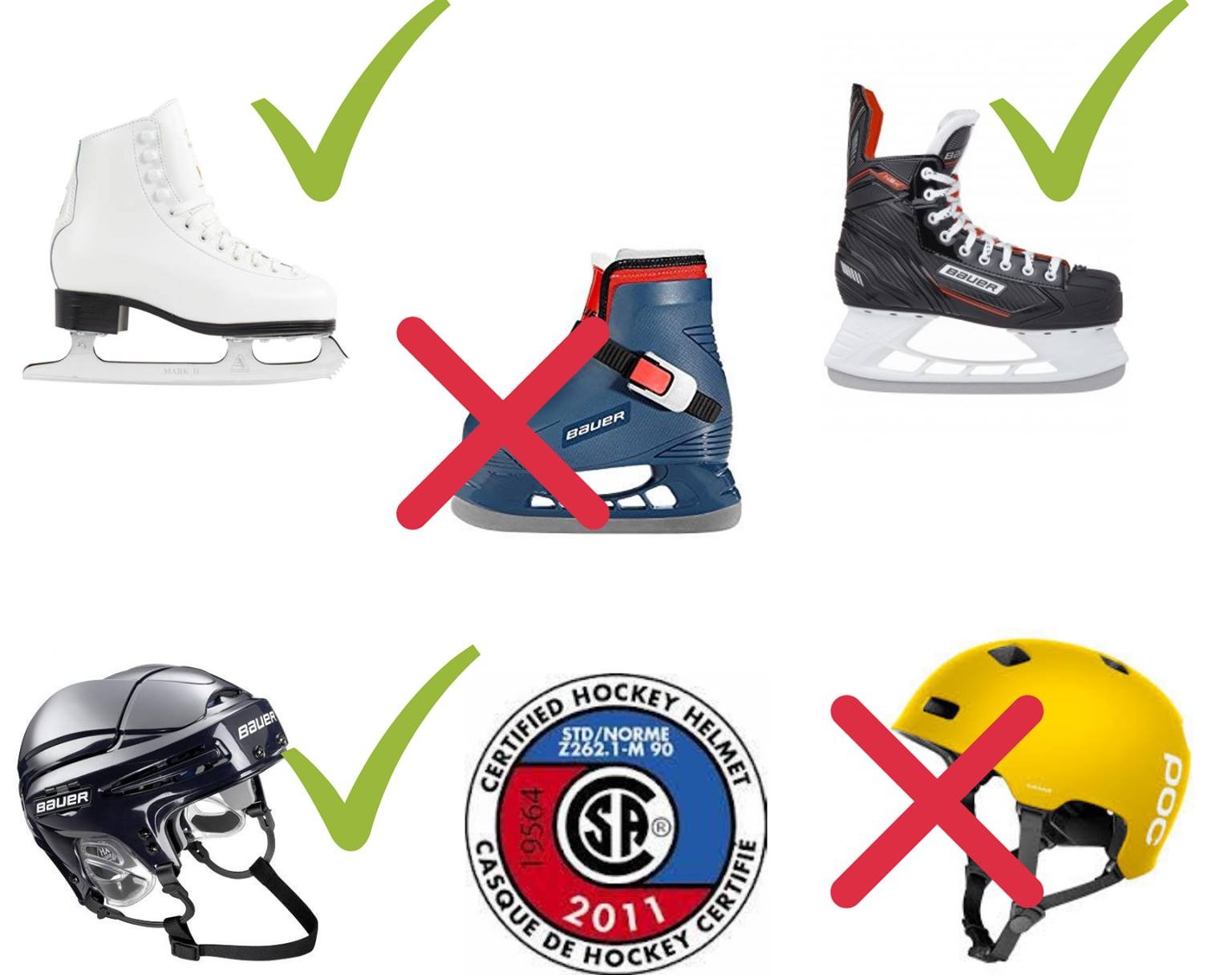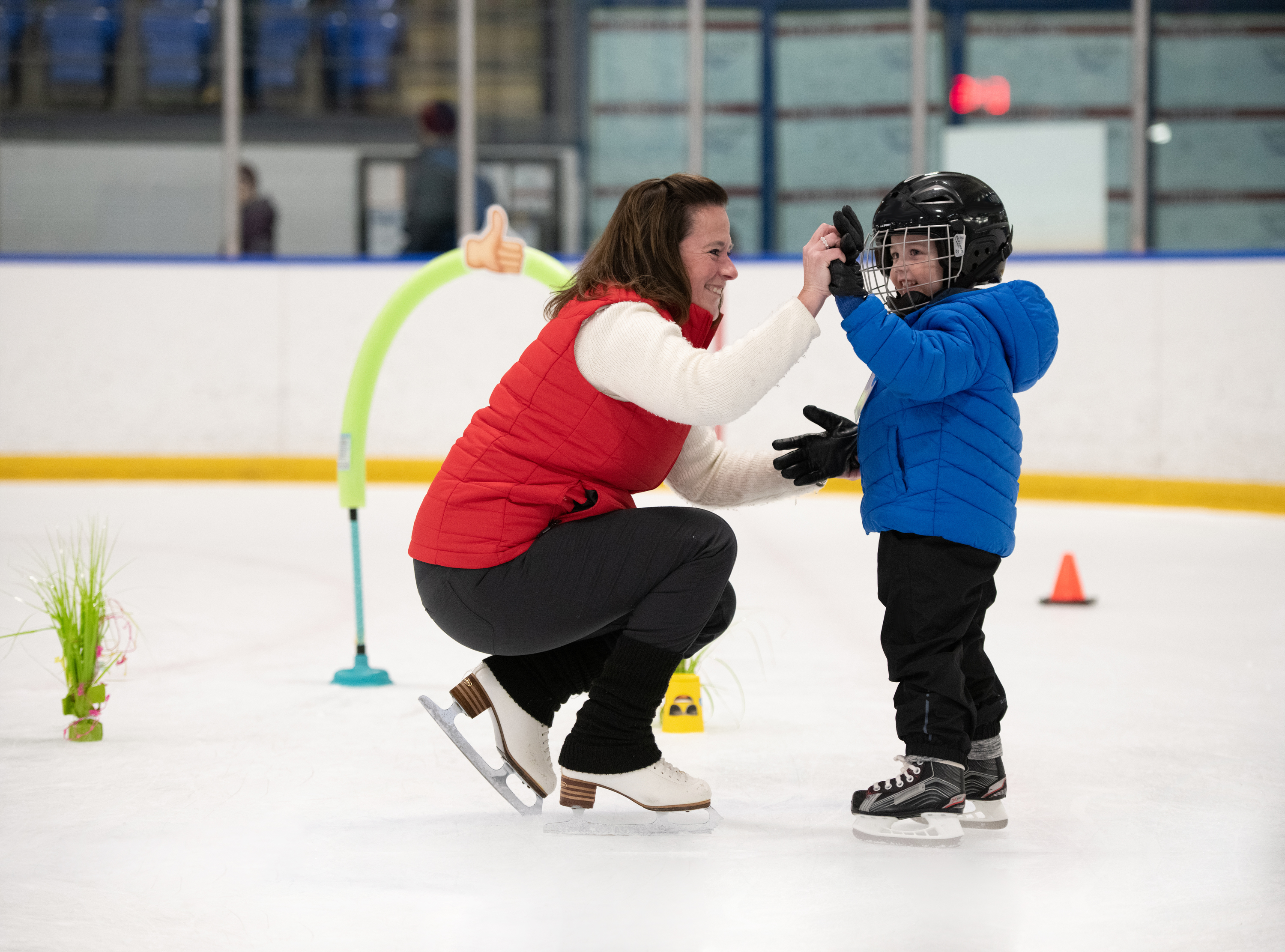CanSkate
Skate Canada’s official ‘learn-to-skate program’ focuses on fun, participation, and basic skating skill development. This program gives skaters a strong foundation for figure skating, hockey, speed skating, and ringette.
Certified coaches teach lessons in a group format, with support from trained Program Assistants. Skaters move at their own pace, with coaches using teaching aids, music, and a variety of activities to create an engaging and fun learning environment.
CanSkate uses nationally-tested and proven curriculum and delivery methods that guarantee skater success in developing stronger basic skills and in developing them faster. The CanSkate program consists of six levels. Within each level there are three elements - balance, control, and agility - to master before receiving a badge and moving up to the next level.
Powell River Skating Club's CanSkate program covers badges one through six. If your skater is interested in continuing on with the sport of figure skating, they have the option of joining our Jr StarSkate program once they've passed level four.
Skating ability requirements: In order to participate in CanSkate lessons, a skater must be able to stand unassisted, get up from the ice unassisted, and march forwards unassisted. The recommended age limit is 4 and up.
Mandatory Equipment
To safely participate in the CanSkate program, skaters require the following equipment:
-
Proper, well-fitting skates (strongly recommend standard hockey or figure skates that lace up). Participants must have their own skates as the Powell River Skating Club is not able to provide rentals.
-
CSA-approved helmet that has not expired. Bike helmets are not permitted. Participants must bring their own helmet.
-
Warm sweater or jacket that is zipped up - layers are a plus!
-
Gloves or mittens.
 |
Frequently Asked Questions
We are new to skating, where do we start?
All children new to the Powell River Skating Club should register for our CanSkate program. Your child will develop and improve the basic skills in a fun and exciting environment under the watchful eye of experienced coaches and our elite skating program assistants.
What are the minimum requirements to participate in CanSkate?
Your child must be at least 4 years old to join the CanSkate program. They must also be able to use their own strength to get up from the ice and propel themselves forward.
How many levels are there in the CanSkate program?
Do the sessions fill up quickly?
Yes! Our CanSkate program is very popular and most classes offered will reach the maximum number of skaters before the starting date. We do start a waiting list when a session fills, but it is best to register early to guarantee a spot!
What can we expect at skating lessons?
Skating lessons are a fun and exciting challenge for young children. Our Skate Canada Certified Professional Coaches and Program Assistants are fun and enthusiastic individuals who are committed to providing quality skating programs for our members.
Classes are typically 45 minutes in length. Lesson time is taught with the use of 3-6 instructional circuits, giving skaters a chance to learn a variety of elements at their own pace. The circuits in which the skaters rotate through highlight skill requirements of all three learning categories.
The participants are evaluated on at least one of the circuits each session, so please be disciplined in arriving to skating on time so that your skater does not miss their evaluation time. If you happen to arrive after the session start time, please close the gate after they get on the ice. It is a required safety policy that gate doors be shut during program sessions.
Lessons are overseen by the Head Coach with Program Assistants helping individual children grow their skills. Program Assistants are volunteer youth helpers who play a vital role in the success of this program.
What type of skates should I buy?
Skaters in CanSkate can wear either hockey or figure style skates.
We recommend that you purchase skates that have laces and not clips or dials to tighten. Skates with laces allow for the skate to be better adjusted to fit the child’s growing foot. We also DO NOT recommend adjustable skates. While these may seem like a cost saving option for a young child that is growing rapidly, it is detrimental to their progress. As you enlarge this type of skates, the blade becomes too short for the boot and it causes difficulty for the skater to maintain proper balance and technique.
Skates should be strong enough to support your skater's ankles, allowing them to stand straight and not have ankles flop inward or bow outward.
How do I ensure my child's skates fit?
Proper equipment is essential to becoming skilled in most sports and skating is no exception! Skaters cannot learn skills unless their skates fit well and support their ankles. If your child cannot walk across the floor holding his/her ankles up it is highly unlikely that they will be any better on the ice.
Use the tips below when getting skates fitted to ensure you purchase the correct size of skates:
- Wear only one pair of socks or tights (the same pair that will be worn while skating)
- Partially unlace boot through instep
- Slide foot forward so toe can touch the front but not feel cramped
- Stand with weight equally distributed over both feet—bend knees slightly
- The space at the back of the heel should be no more than a pencil width
- Don't forget to check if the width of the skates fit the foot—they should be snug but comfortable
- Walk around in the skates off the ice; they should feel comfortable
Avoid buying larger size skates for skaters to “grow into”. If you buy children's skates too loose, they will interfere with skating ability and skill development and may actually be dangerous due to lack of support.
How do I tie up my child's skates?
- Wearing only one pair of socks or tights, place the foot comfortably in the boot. Be sure the tongue is centered and pulled all the way up.
- Start at the toe of the skate and tighten laces comfortably over the toe and front of the boot.
- Before tightening the hooks, wiggle your toes to make sure the skates feel comfortable.
- Tie laces snugly around the ankle and tie a tight bow or double knot. Do not wrap laces around the ankle. If you feel you need to do this for more support, you probably need a new pair of skates, or shorter laces!
- Make sure extra lace is tucked away, not flopping around dangerously. If the laces are too long, just cut them.
How should I care for my child's equipment?
Always wear protective guards on your skate blades when not on the ice. Do NOT walk on concrete surfaces without skate guards. Sharpening will be required and blades will wear much faster, as blades will be seriously damaged by concrete.
After a lesson, dry blades and sole plate completely with a cloth. This will prevent the blades from rusting. Always remove guards and allow skates to air dry completely after each skate.
When not in use, remove skates from the skate bag and leave them in the open so that they can air dry thoroughly, allowing the leather to breathe.
Sharpening your skates
All new skates and any skates that have not been worn for a long period of time will need to be sharpened before you skate on them. Re-sharpen skates after approximately 20-30 hours of skating. More frequent sharpening may be required if the skater walks on concrete, rubber, or carpeted surfaces without guards, if the blades are not wiped dry, or if there are severe nicks and rough surfaces on the edges of the blade.
Do NOT allow the bottom pick to be removed on figure skates. The pick is an integral part of the design of figure skates and is essential to properly balance.
What clothing should my child wear?
The rink is cold so remember to bring extra clothing and have children layer when possible.
Pants/Jackets - To keep your child warm, snow pants or windbreaker pants over long pants are recommended. Sweaters/sweatshirts and turtlenecks or a winter jacket on top should be sufficient. Try to avoid clothing that is too bulky, restrictive or not waterproof.
Mitts/Gloves – Bring at least 1 pair of warm gloves each day and have a back up pair in case they get wet. Put a few pairs of gloves in the skating bag at the beginning of the season and you won't have to remember to bring them each time.



